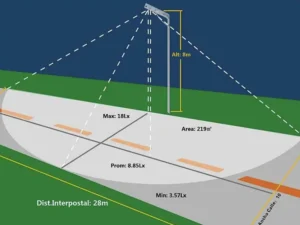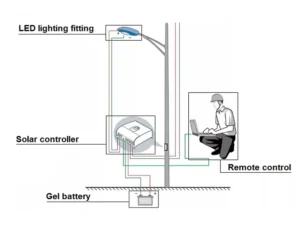Street lighting is crucial for contemporary urban transportation. It provides illumination for drivers, pedestrians, and cyclists at night. If you are responsible for installing streetlights in your community, it is essential to do so safely and efficiently. This guide offers detailed instructions on street light installation in your community in a safe and efficient manner.

Step 1: Determine the need Before Street Light Installation
Before installing any streetlights, first, determine the need for streetlights. Look at the area where streetlights will be installed and assess the current lighting levels.
- For areas with streetlights:
You will need to evaluate the effectiveness of the streetlights. From there, determine if additional streetlights are required.
- For areas without street lights:
Consider the level of pedestrian and vehicular traffic at night. You will also need to assess the area’s crime rate and any potential safety hazards. Installing street lights will prevent as many of these safety hazards as possible.
Step 2: Obtain the Necessary
PermitsIn the previous step you identified the need for street lights. Next, it will be necessary to acquire the appropriate permits before any installation. Depending on your location, you may need to obtain a permit from your local government or utility company. These permits will usually list the technical requirements for the streetlights. These requirements include the type of lamps and bulbs that can be used, etc.
Step 3: Choose the right equipment
Next, you need to choose the right equipment for your street lights. This will include the lamps, bulbs, and poles that will be used. Choosing superior quality equipment is highly recommended. For example, Luxific makes street lights that can withstand harsh weather conditions.
When choosing bulbs, you want to consider color temperature and brightness levels. The generally recommended color temperature for streetlights is 3000K-4000K. Such streetlights provide warm, natural light that is easy on the eyes. As for brightness, you want to choose a level appropriate for the area where the streetlight will be installed. For example, a busy intersection may need brighter lighting than a residential street.
Step 4: Lay out the location of the lights

Before street light installation, you will need to lay out where the street lights will be installed. It usually involves measuring the distance between each light. You will then need to mark where the light poles will be installed.
It is essential to ensure the lights are adequately spaced from each other. If the lights are too far apart, dark areas may exist between them. On the other hand, if the lights are spaced too close together, the area may be overly illuminated. Both of these situations may pose a safety hazard to drivers.
Step 5: Install the light poles and fixtures
After marking the location, you may proceed with the installation of the light pole and luminaire.First, dig a hole with the pole. Then use concrete to fix it. Finally, install the light fixture on the pole. Ensuring the pole is installed at the correct height and angle is essential. The height of the pole will be determined by the width of the roadway and the desired level of illumination.In general, poles should be installed at 15-25 feet. The angle of the light pole will depend on the roadway’s width and the curve’s angle.
Step 6: Connect the wiring

After the light pole and fixture are installed, you will need to connect the wiring. It usually involves running a wire conduit from the light pole to the power source. The wires are then connected to the luminaire.
Ensuring proper grounding of the wiring and securing all connections is crucial. It will help prevent electrical shorts and other safety hazards.
Step 7: Test the lights
As soon as the street light installation is complete, you must test the lights to ensure they are working properly. You must turn on each light and check for flicker or other problems. You also should ensure that the area’s lighting level is appropriate for the installed fixture.
Step 8: Maintain Street lights
Finally, you should maintain your streetlights. This step ensures that streetlights continue to function properly over time. Clean the fixtures and replace bulbs as needed. You must also perform regular inspections to identify potential safety hazards.
Conclusion
Installing street lights demands meticulous planning and attention to detail to ensure a safe and effective outcome. Following the aforementioned steps will ensure a safe and effective installation. Don’t forget to:
- Acquire the required permits
- Opt for high-quality equipment
- Maintain streetlights over time
Click to learn about high quality street lights.
